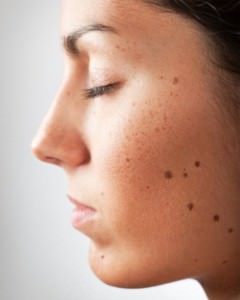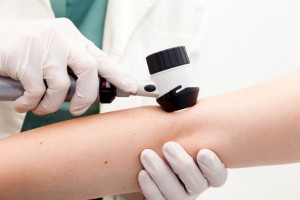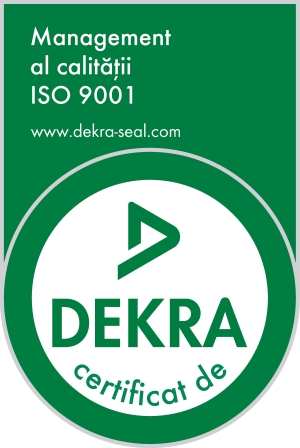What Are Moles?
Moles – the popular term for “melanocytic nevi”, are, from a medical point of view, pigment cell agglomerations that can arise on anyone’s skin, as we expose our bodies to the sun and the melanin gets “activated”. They are generally benign, but some of them can transform into melanoma – the most advanced form of cancer of all known types, causing metastases in all organs.
What Causes A Mole?
The most frequent mole occurrence causes are:
- Intensive sun and sunburn exposure;
- Genetic predisposition;
- Nutrition;
- Skin aggressions (mechanical, physical, chemical).
What Signs Send Us To The Doctor’s?
 Even if moles do not apparently feature any changes, it is recommended to visit the doctor once a year for a computer-aided demoscopy. Here is how you can recognize a mole that needs to be examined by the dermatologist:
Even if moles do not apparently feature any changes, it is recommended to visit the doctor once a year for a computer-aided demoscopy. Here is how you can recognize a mole that needs to be examined by the dermatologist:
- it changes appearance;
- it has an asymmetric shape;
- it has an irregular contour;
- it has a non-uniform colour;
- you start feeling the mole, it causes discomfort;
- you notice certain evolutions of the mole, which occur gradually: they change size, colour, the nevi become sensitive or start bleeding.
These features may not arise simultaneously, but the presence of any abnormalities of the ones listed above raises a suspicion of malignant transformation (melanoma).
When Should You Have A Mole Removed?
 You should have moles removed in the following situations:
You should have moles removed in the following situations:
- In the case of a cancer potential suspicion, the patient noticing changes in the shape, size or colour;
- If the dermatologist, following a dermascope examination, appreciates that there is a malignancy transformation potential.
For all mole-related concerns, it is advisable to contact the dermatologist and keep them under observation.
What Type of Investigations Are Available?
Dermoscopy
A microscopic investigation that increases, takes a snapshot and then stores benign tumour images. It allows for the detailed investigation of the cells/melanocytes and of their pattern, so that specialists can precisely identify moles with a malignant transformation risk.
Mole Mapping
 The microscopic examination and digital monitoring of moles (mole mapping), helping the dermatologist to examine patients, identify the moles that require further investigation, takes pictures of them using a high accuracy camera, and then maps them. A state-of-the-art video-dermatoscope allows for the microscopic study of the moles. The advantage of this technique is that moles can be re-examined after a preset period of time.
The microscopic examination and digital monitoring of moles (mole mapping), helping the dermatologist to examine patients, identify the moles that require further investigation, takes pictures of them using a high accuracy camera, and then maps them. A state-of-the-art video-dermatoscope allows for the microscopic study of the moles. The advantage of this technique is that moles can be re-examined after a preset period of time.
If there are malignant transformation suspicions with regards to the nevus, the excision (removal) of the mole is recommended.
Nevi excision is surgically performed, through the following methods:
- excision (the incision and removal of the mass), sometimes with suture
- electrocautery excision (an instrument is used to burn the mass).




